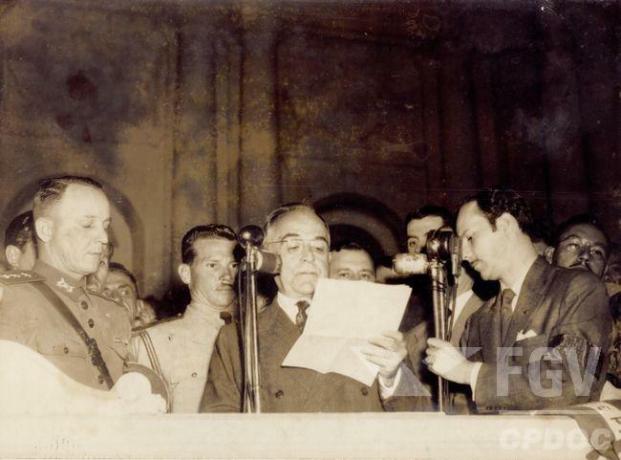Slaveship it was the name by which the boat that transported blacks destined for slave labor on the American continent between the 16th and 19th centuries became known.
The first recorded shipment of enslaved Africans took place in 1525 and the last in 1866.
slave trade
Until the beginning of the 18th century, before the laws that began to prohibit the slave trade, blacks were treated as a commodity similar to any other.
Thus, the enslaved were transported in the holds of ships where they remained confined in journeys that could last two months, until reaching their destination.

They were forcibly shipped and imprisoned in holds that were barely enough to remain seated. Enslaved Africans were kept naked, separated by sex, and men were kept in chains to avoid riots. The women, on the other hand, suffered sexual violence by the crew.
Small groups were sometimes allowed to go up on deck for a sunbath. There was also sadism on the part of the crew that forced the enslaved to dance or subjected them to various humiliations.
It is estimated that from 1525 to 1866 12.5 million individuals (an estimated 26% were still children) were transported as merchandise to US ports.
Of these, about 12.5% (1.6 million) did not survive the trip. It is important to emphasize that this number refers only to those who died during the trip.
This was the largest forced displacement in history recorded so far.
Illnesses
The main causes of death were related to gastrointestinal problems, scurvy and infectious diseases - which also affected the crew.
revolts
Another factor that contributed to the high number of deaths was the punishment applied to the rebels.
Most slaves were forced to witness the punishment so that they would be persuaded not to try the same.
The best known was that of the ship "Amistad" in 1839 that would have its story taken to the cinema. However, other revolts, such as the one on the boat "Kentucky", of 1845, was put down and all blacks thrown overboard.

End of the slave trade
Ship conditions worsened as the international market changed course and no longer considered the capture and imprisonment of black Africans profitable.
Starting in 1840 (a century after becoming the world's leading slave trader), England began to curb slave transport.
With the change in the conception of human slavery, this activity came to be considered as a slave trade.
Part of the British fleet starts to monitor the routes and capture slave ships. In order not to be caught in the act, the captains often ordered the “cargo” – human lives – to be thrown overboard.
To compensate for British surveillance, traffickers increased the number of captives per ship. This drastically reduced the sanitary and structural conditions of the trips, increasing suffering and the number of deaths.
The Ship Negreiro de Castro Alves
The poet Castro Alves (1847-1871) engaged with the Abolitionism and wrote the poem "Navio Negreiro" in 1868.
Castro Alves used to recite it in theatre, gatherings and soirees to make Brazilian society aware of the horrors to which blacks were subjected on these ships.
The verses described the terrible travel conditions and were directly critical of the Brazilian government for still allowing the entry of slaves into its territory, despite the enactment of the Eusébio de Queirós Law.
Read an excerpt of the poem below:
It was a daunting dream... the deck
That of the Luzerns the glow reddens.
In blood to bathe.The clink of irons... the crack of a whip...
Legions of men black as the night,
Horrific to dance...Black women, hanging on their tits
Skinny children whose black mouths
Water the mothers' blood:Other girls, but naked and amazed,
In the whirlwind of dragged specters,
In vain anguish and grief!
read more:
- slavery in Brazil
- Brazil Colony
- Abolition of Slavery
- Golden Law
- Quilombos
- Black Consciousness

